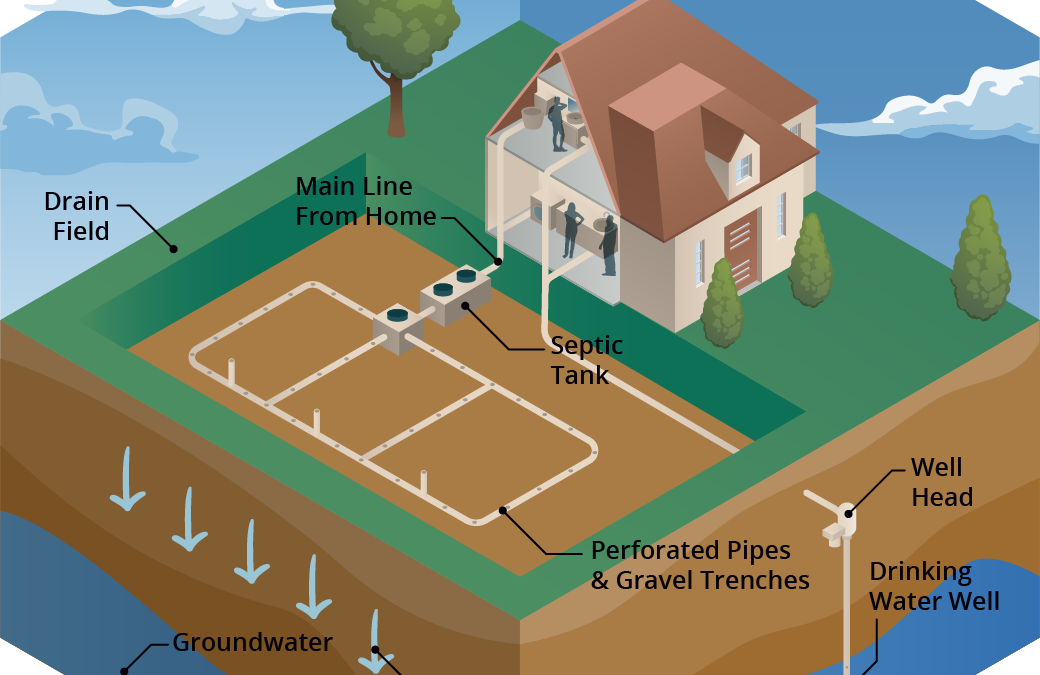
by Andrea Albertin | Jan 28, 2021
Senate Bill 712 ‘The Clean Waterways Act’ was signed into Florida law on June 30, 2020. The purpose of the bill is to better protect Florida’s water resources and focuses on minimizing the impact of known sources of nutrient pollution. These sources include septic systems, wastewater treatment plants, stormwater runoff as well as fertilizer used in agricultural production.

Senate Bill 712 focuses on protecting Florida’s water resources such as Jackson Blue Springs/Merritt’s Mill Pond, pictured here. Credit: Doug Mayo, UF/IFAS.
What major provisions are included in SB 712?
Primary actions required by SB712 were listed in a news release by Governor Desantis’ staff in June 2020 as:
- Regulation of septic systems as a source of nutrients and transfer of oversight from the Florida Department of Health (DOH) to the Florida Department of Environmental Protection (DEP).
- Contingency plans for power outages to minimize discharges of untreated wastewater for all sewage disposal facilities.
- Provision of financial records from all sanitary sewage disposal facilities so that DEP can ensure funds are being allocated to infrastructure upgrades, repairs, and maintenance that prevent systems from falling into states of disrepair.
- Detailed documentation of fertilizer use by agricultural operations to ensure compliance with Best Management Practices (BMPs) and aid in evaluation of their effectiveness.
- Updated stormwater rules and design criteria to improve the performance of stormwater systems statewide to specifically address nutrients.
How does the bill impact septic system regulation?
The transfer of the Onsite Sewage Program (OSP) (commonly known as the septic system program) from DOH to DEP becomes effective on July 1, 2021. So far, DOH and DEP submitted a report to the Governor and Legislature at the end of 2020 with recommendations on how this transfer should take place. They recommend that county DOH employees working in the OSP continue implementing the program as DOH-employees, but that the onsite sewage program office in the State Health Office transfer to DEP and continue working from there. DOH created an OSP Transfer web page where updates and documents related to the transfer are posted.
How does the bill impact agricultural operations?
SB 712 affects all landowners and producers enrolled in the Florida Department of Agriculture and Consumer Services (FDACS) BMP Program. Under this bill:
- Every two years FDACS will make an onsite implementation verification (IV) visit to land enrolled in the BMP program to ensure that BMPs are properly implemented. These visits will be coordinated between the producer and field staff from FDACS Office of Agriculture and Water Policy (OAWP).
- During these visits (and as they have done in the past), field staff will review records that producers are required to keep under the BMP program.
- Field staff will also collect information on nitrogen and phosphorus application. FDACS has created a specific form, the Nutrient Application Record Keeping Form or NARF where producers will record quantities of N and P applied. FDACS field staff will retain a copy of the NARF during the IV visit.
FDACS-OAWP prepared a thorough document with responses to SB 712 Frequently Asked Questions (FAQ’s). It includes responses to questions about site visits, the NARF and record keeping, why FDACS is collecting nutrient records and what will be done with this information. The fertilizer records collected are not public information, and are protected under the public records exemption (Section 403.067 Florida Statutes). For areas that fall under a Basin Management Action Plan (like the Jackson Blue and Wakulla Springs Basins in the Florida Panhandle), FDACS will combine the nitrogen and phosphorus application data from all enrolled properties (total pounds of N and P applied within the BMAP). It will then send the aggregated nutrient application information to FDEP.
Details of how all aspects of SB 712 will be implemented are still being worked out and we should continue to hear more in the coming months.
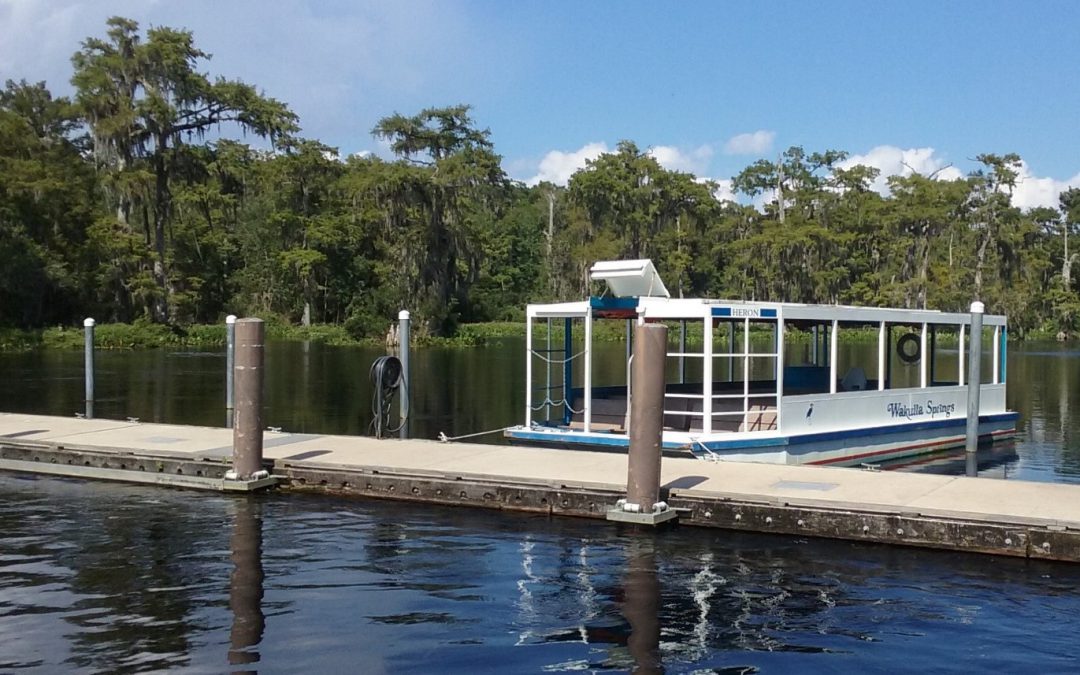
by Andrea Albertin | May 3, 2019
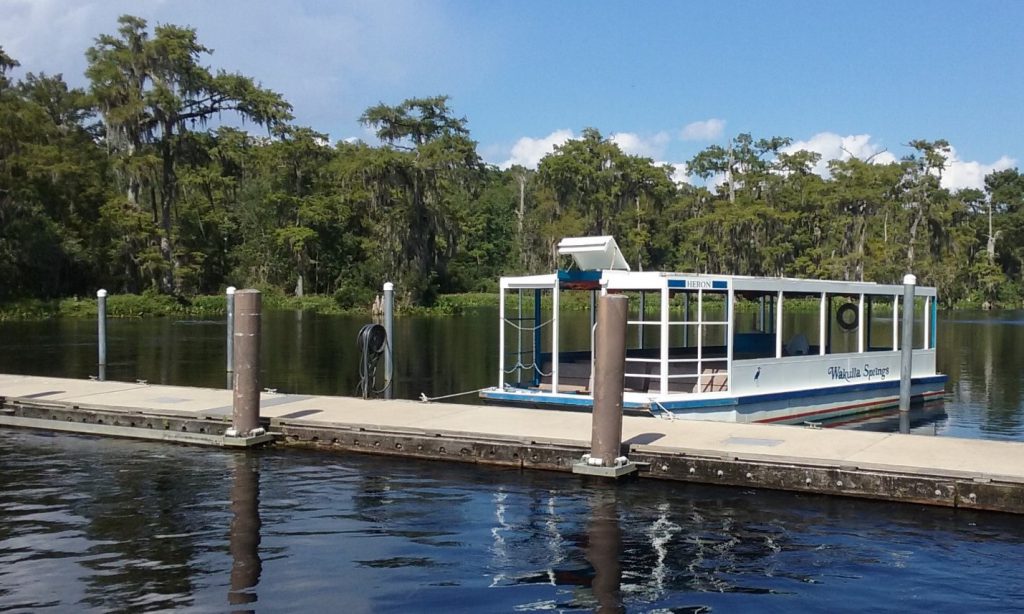
The major goal of the Wakulla Springs Basin Management Action Plan (BMAP) is to reduce nitrogen loads to Wakulla Springs. Septic systems are identified as the primary source of this nitrogen. Photo: A. Albertin
A Basin Management Action Plan, or BMAP, is a management plan developed for a waterbody (like a spring, river, lake, or estuary) that does not meet the water quality standards set by the state. One or more pollutants can impair a waterbody. In Florida, the most common pollutants are nutrients (particularly nitrate), pathogens (fecal coliform bacteria) and mercury.
The goal of the BMAP is to reduce the pollutant load to meet water quality standards set by the Florida Department of Environmental Protection (FDEP). BMAPS are roadmaps with a list of projects and management action items to reach these standards. FDEP develops them with stakeholder input. Targets are set at 20 years, and progress towards those targets is assessed every five years.
It’s important to understand that a BMAP encompasses the entire land area that contributes water to a given waterbody. For example, the land area that contributes water to Jackson Blue Springs and Merritts Mill Pond (either from surface waters or groundwater flow) is 154 square miles, while the Wakulla Springs Basin covers an area of 1,325 square miles.
BMAPs in the Panhandle
There are 33 adopted BMAPS in the state, and 5 that are pending adoption. Here in the Panhandle, we have three adopted BMAPS. They are the Bayou Chico BMAP in Escambia County, the Wakulla Springs BMAP in Wakulla, Leon, Gadsden and small parts of Jefferson County, and the Jackson Blue/Merritts Mill Pond BMAP in Jackson County. All three are impaired for different reasons.
- Bayou Chico discharges into Pensacola Bay and is polluted by fecal coliform bacteria. The BMAP addresses ways to reduce coliforms from humans and pets, which includes sewer expansion projects, stormwater runoff management, septic tank inspections, pet waste ordinances and a Clean Marina and Boatyard program.
- Wakulla Springs Nitrate from human waste is the main pollutant to Wakulla Springs, and Tallahassee’s wastewater treatment facility and the city’s Southeast Sprayfield were identified as the main sources. Both sites were upgraded (the sprayfield was moved), greatly reducing nitrate contributions to the spring basin. The BMAP is focused on septic systems and septic to sewer hookups.
- Jackson Blue/Merritts Mill Pond Nitrate is also the primary pollutant to the Jackson Blue/Merritts Mill Pond Basin, but nitrogen fertilizer from agriculture is identified as the main source. This BMAP focuses on farmers implementing Best Management Practices (BMPs), land acquisition by the Northwest Florida Water Management District , as well as septic tanks, recognizing their nitrogen contribution to Merritts Mill Pond.
Once all the BMAPS are adopted, FDEP states that almost 14 million acres will be under active basin management, an area that includes more than 6.5 million Floridians.
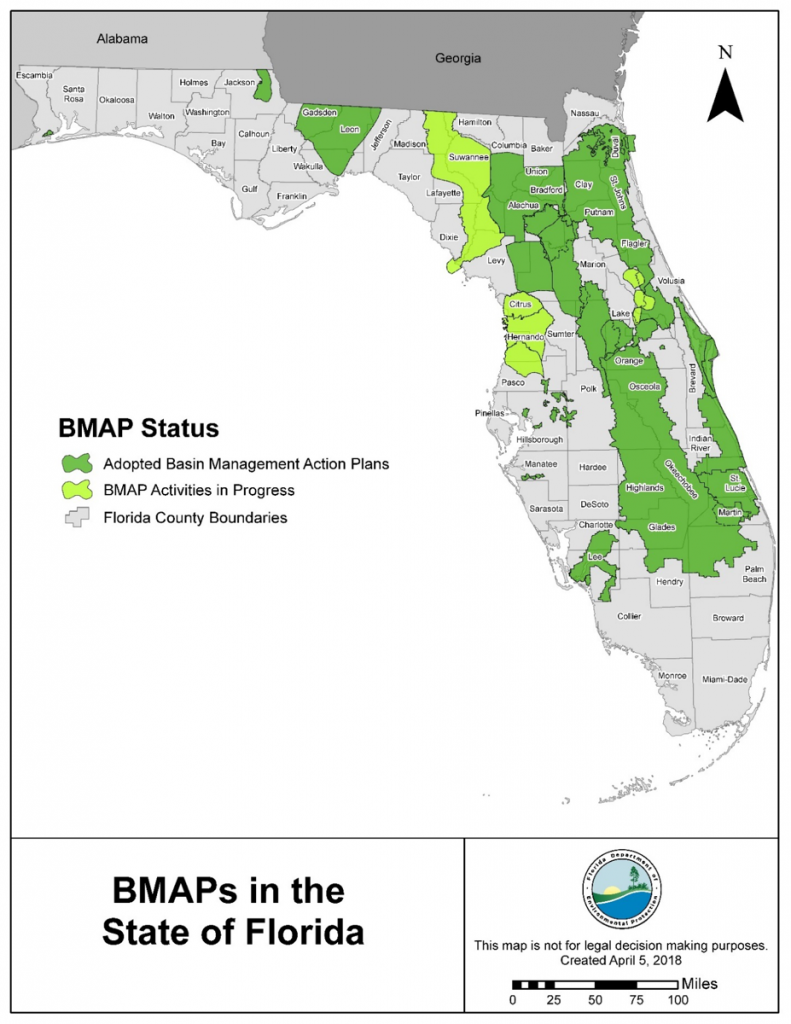
Adopted and pending BMAPS in Florida. Source: FDEP Statewide Annual Report, June 2018
How are residents living in an area with a BMAP affected? It varies by BMAP and specifically land use within its boundaries. For example, in BMAPs where nitrogen from septic systems are found to be a major source of nutrient impairment to a water body, septic to sewer hookups, or septic system upgrades to more advanced treatment units will be required in specific areas. In urban areas where nitrogen fertilizer is an important source, municipalities are required to adopt fertilizer ordinances. Where nitrogen fertilizer from agricultural production is a major source of impairment, producers are required to implement Best Management Practices to reduce nitrogen loads.
More information about BMAPS
For specific information on BMAPS, FDEP has an excellent website: https://floridadep.gov/dear/water-quality-restoration/content/basin-management-action-plans-bmaps All BMAPs (full reports with specific action items listed) can be found there, along with maps, information about upcoming meetings and webinars and other pertinent information.
Your local Health Department Office is the best resource regarding septic systems and any ordinances that may apply to you depending on where you live. Your Water Management District (in the Panhandle it’s the Northwest Florida Water Management District) is also an excellent resource and staff can let you know whether or not you live or farm in an area with a BMAP and how that may affect you.
by Andrea Albertin | May 4, 2018
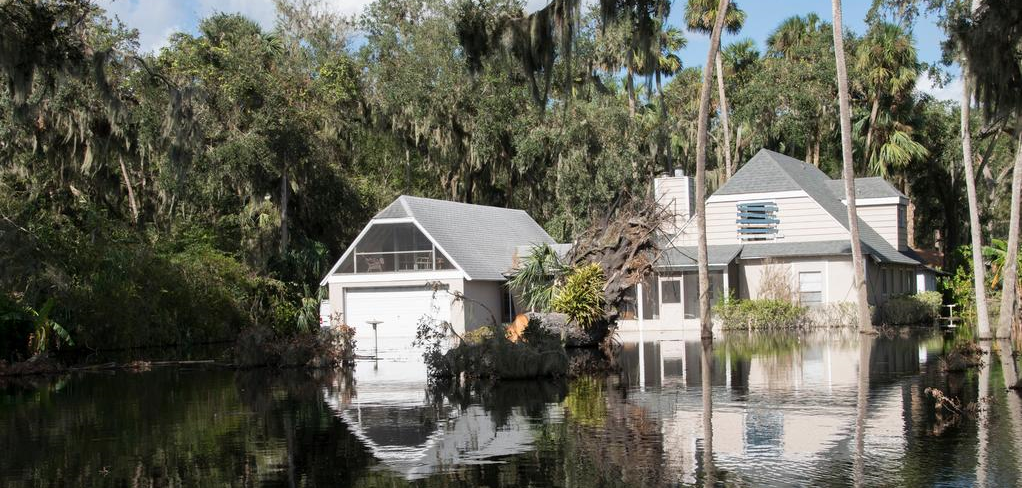
Special care needs to be taken with a septic system after a flood or heavy rains. Photo credit: Flooding in Deltona, FL after Hurricane Irma. P. Lynch/FEMA
Approximately 30% of Florida’s population relies on septic systems, or onsite sewage treatment and disposal systems (OSTDS), to treat and dispose of household wastewater. This includes all water from bathrooms and kitchens, and laundry machines.
When properly maintained, septic systems can last 25-30 years, and maintenance costs are relatively low. In a nutshell, the most important things you can do to maintain your system is to make sure nothing but toilet paper is flushed down toilets, reduce the amount of oils and fats that go down your kitchen sink, and have the system pumped every 3-5 years, depending on the size of your tank and number of people in your household.
During floods or heavy rains, the soil around the septic tank and in the drain field become saturated, or water-logged, and the effluent from the septic tank can’t properly drain though the soil. Special care needs to be taken with your septic system during and after a flood or heavy rains.
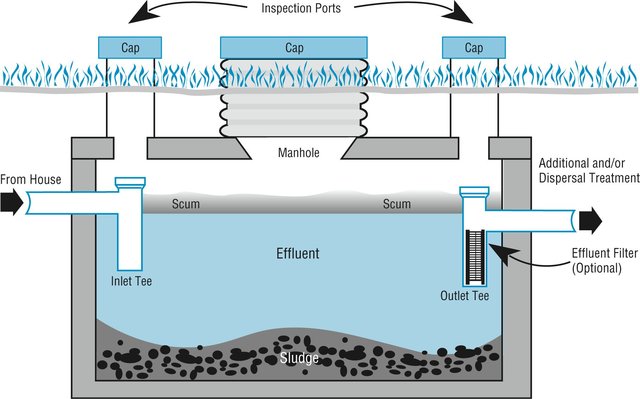
Image credit: wfeiden CC by SA 2.0
How does a traditional septic system work?
The most common type of OSTDS is a conventional septic system, made up of (1) a septic tank (above), which is a watertight container buried in the ground and (2) a drain field, or leach field. The effluent (liquid wastewater) from the tank flows into the drain field, which is usually a series of buried perforated pipes. The septic tank’s job is to separate out solids (which settle on the bottom as sludge), from oils and grease, which float to the top and form a scum layer. Bacteria break down the solids (the organic matter) in the tank. The effluent, which is in the middle layer of the tank, flows out of the tank and into the drain field where it then percolates down through the ground.
During floods or heavy rains, the soil around the septic tank and in the drain field become saturated, or water-logged, and the effluent from the septic tank can’t properly drain though the soil. Special care needs to be taken with your septic system during and after a flood or heavy rains.
What should you do after flooding occurs?
- Relieve pressure on the septic system by using it less or not at all until floodwaters recede and the soil has drained. For your septic system to work properly, water needs to drain freely in the drain field. Under flooded conditions, water can’t drain properly and can back up in your system. Remember that in most homes all water sent down the pipes goes into the septic system. Clean up floodwater in the house without dumping it into the sinks or toilet.
- Avoid digging around the septic tank and drain field while the soil is water logged. Don’t drive heavy vehicles or equipment over the drain field. By using heavy equipment or working under water-logged conditions, you can compact the soil in your drain field, and water won’t be able to drain properly.
- Don’t open or pump out the septic tank if the soil is still saturated. Silt and mud can get into the tank if it is opened, and can end up in the drain field, reducing its drainage capability. Pumping under these conditions can also cause a tank to pop out of the ground.
- If you suspect your system has been damage, have the tank inspected and serviced by a professional. How can you tell if your system is damaged? Signs include: settling, wastewater backs up into household drains, the soil in the drain field remains soggy and never fully drains, and/or a foul odor persists around the tank and drain field.
- Keep rainwater drainage systems away from the septic drain field. As a preventive measure, make sure that water from roof gutters doesn’t drain into your septic drain field – this adds an additional source of water that the drain field has to manage.
More information on septic system maintenance after flooding can be found on the EPA website publication https://www.epa.gov/ground-water-and-drinking-water/septic-systems-what-do-after-flood
By taking special care with your septic system after flooding, you can contribute to the health of your household, community and environment.







